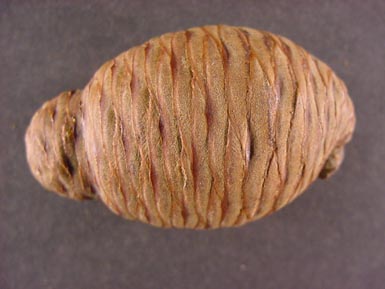Form: This is a large tree reaching from 130 to 150 ft. in height and a dbh of 3 1/2 to 4 ft. It also has a dome shaped crown.
Needles:
Arrangement: generally 2-ranked
Length: 2-3" long; longest needles of western firs
Shape: blunt at tip; extending at right angles from twig, curving upwards
Other: silvery blue-green
Bark: The bark is thin, smooth, and gray with resin pockets. Upon maturity is becomes thick and ashy-gray in color with deep furrows.
Cones: The cones are 3 to 6" long, oblong in shape and have a yellow-green to purple tinge.

Distinguishing characteristics: This tree has a dome shaped crown, oblong cones, two ranked needles, and is found between 6,000 to 11,000 ft. in elevation.
Range: This is a western species that is found around 6,000 to 11,000 feet in elevation. It is mainly found in the southwest region.
Silvics: This species is tolerant and requires less moisture than other western firs. This tree also does well on poor, dry sites.
Ecological and cultural importance: This tree is an important commercial species. It is used for lumber and plywood. It is an excellent source of cover for wildlife. Mule deer do browse in small amounts.